Ads, Fads, and
Consumer Culture
Ads, Fads, and
Consumer Culture
Advertisings Impact on
American Character and Society
Fourth EDITION
Arthur Asa Berger
With illustrations by the author
ROWMAN & LITTLEFIELD PUBLISHERS, INC.
Lanham Boulder New York Toronto Plymouth, UK
Published by Rowman & Littlefield Publishers, Inc.
A wholly owned subsidiary of The Rowman & Littlefield Publishing Group, Inc.
4501 Forbes Boulevard, Suite 200, Lanham, Maryland 20706
http://www.rowmanlittlefield.com
Estover Road, Plymouth PL6 7PY, United Kingdom
Copyright 2011 by Rowman & Littlefield Publishers, Inc.
All rights reserved. No part of this book may be reproduced in any form or by any electronic or mechanical means, including information storage and retrieval systems, without written permission from the publisher, except by a reviewer who may quote passages in a review.
British Library Cataloguing in Publication Information Available
The Library of Congress has cataloged the previous edition of this book as follows:
Berger, Arthur Asa, 1933
Ads, fads, and consumer culture : advertisings impact on American character and
society / Arthur Asa Berger ; with illustrations by the author. 3rd ed.
p. cm.
Includes bibliographical references and index.
1. AdvertisingUnited States. 2. Popular cultureUnited States. 3. Consumer
educationUnited States. I. Title.
HF5823.B438 2007
659.10420973dc22
2006100596
ISBN: 978-1-4422-0668-7 (pbk. : alk. paper)
 The paper used in this publication meets the minimum requirements of American National Standard for Information SciencesPermanence of Paper for Printed Library Materials, ANSI/NISO Z39.48-1992.
The paper used in this publication meets the minimum requirements of American National Standard for Information SciencesPermanence of Paper for Printed Library Materials, ANSI/NISO Z39.48-1992.
Printed in the United States of America
Some measure of greed exists unconsciously in everyone. It represents an aspect of the desire to live, one which is mingled and fused at the outset of life with the impulse to turn aggression and destructiveness outside ourselves against others, and as such it persists unconsciously throughout life. By its very nature it is endless and never assuaged; and being a form of the impulse to live, it ceases only with death.
The longing or greed for good things can relate to any and every imaginable kind of goodmaterial possessions, bodily or mental gifts, advantages and privileges; but, beside the actual gratifications they may bring, in the depths of our minds they ultimately signify one thing. They stand as proofs to us, if we get them, that we are ourselves good, and full of good, and so are worthy of love, or respect and honour, in return. Thus they serve as proofs and insurances against our fears of emptiness inside ourselves, or of our evil impulses which make us feel bad and full of badness to ourselves and others.
Joan Riviere, Hate, Greed and Aggression

Foreword
Fred S. Goldberg
I spent thirty-four years in advertising: the first fifteen at what was then, arguably, the finest of the large traditional Madison Avenue agencies (Young & Rubicam, NY); the next nine years at arguably the finest creative agency in the country at the time (Chiat/Day, LA); and the last ten founding and managing my own agency (Goldberg Moser ONeill, San Francisco). This experience provided me with a unique overview and insight into the business of advertising.
When you study advertising and advertisings impact, it helps to understand the context within which advertising messages are developed, produced, and aired. Many of the print ads and commercials that consumers ultimately see could have been demonstrably different, were it not for the conflicting interests that went hand in hand with their development.
In theory, advertisers hire advertising agencies to create ads that will break through and impact their customers and potential customers. They hope to maximize the effectiveness of often limited media and promotional dollars, achieve a competitive edge, and gain extra mileage from each advertising message.
Yet, because of the nature of the industry and the agency and client relationship, a series of conflicts often prevents this from happening as frequently as it should. And this explains, at least in part, why there is so much advertising that is spurious, curious, muddled, and jumbled. The impact that it all has on the American character and culture, as explained in this book, is partially the result of the conflicting way advertising gets developed. One can only wonder what the ads, and their effect, would be if self-interest was removed along the way.
These conflicts have a numbing consequence on the impact of clients advertising dollars and the subsequent success they have in the marketplace selling their products or positioning their companies or causes. The advertising business is unique and particularly difficult because it is fraught with these conflicts which very often result in a dumbed-down final product.
Trying to represent what is best for the client, while still trying to make a profit, is sometimes a challenge for an advertising agency. Its easy to profess, as advertising agencies are prone to do, that their recommendations are impartially formulated only to drive a clients business, but that is not always the case. In fact they are influenced by the existence of various agendas operating at different levels of management in an agency and in different departments. Similar agendas may exist on the client side.
Advertising executives may believe that they are providing complete objectivity, but at the end of the day they can be often prejudiced, partial, and biased. One example that Arthur Berger observes in this book is that for various reasons it is important that the advertising agency recommend only one campaign. It must be made to seem to be the only answer to the companys problems. This practice provides fertile ground for conflicts of interests and less than complete objectivity.
Why does this happen? One reason is conflicts between departments. On the one hand, Account Management representatives may be trying to support the clients view and interest within the agency, while other departments are developing recommendations that may or may not reflect the clients actual needs. Or vice versa. The Account Planners are supposedly trying to represent the consumer; the Creative People are representing their ad; and the Client is concerned about his brand. This leads to internal agency debate, to compromises, and ultimately to a finished product that often depends on who made the strongest argument or had the most authority.
This is all further complicated, as Berger accurately points out, in that people in advertising agencies need to sell both themselves and the products they have been engaged to advertise. This can, in and of itself, create a conflict.
There is another conflict where many advertisers rely on creative testing to help them make a decision. They rely heavily on the often spurious conclusions, and this conflicts directly with implementing work that can truly break through and impact the consumer in a highly competitive manner. In client organizations, testing is a political tool as often as it is a learning device. It helps protect peoples decision making, particularly in the context of a large organizational framework, as much as it determines the worth of a particular message or idea. When a test shows an idea to be normative, then the decision to use it can be more easily justified. In other words, ones backside is adequately covered in the event of a failure.

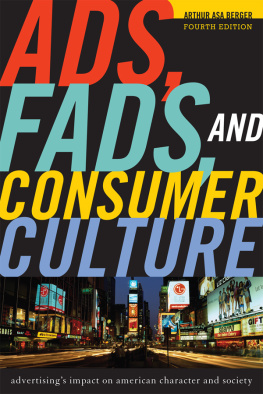


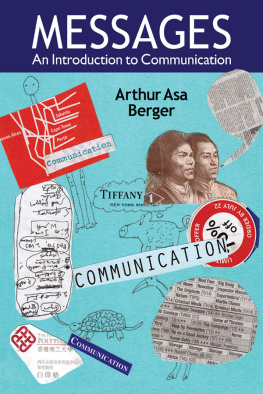

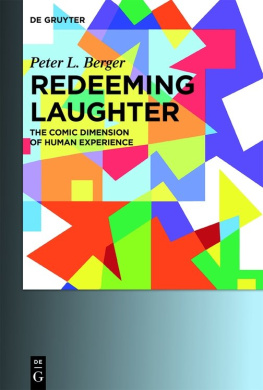




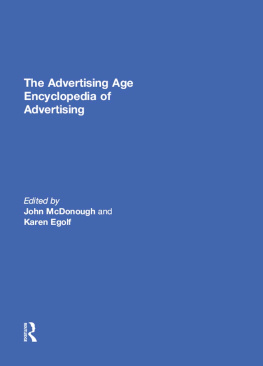
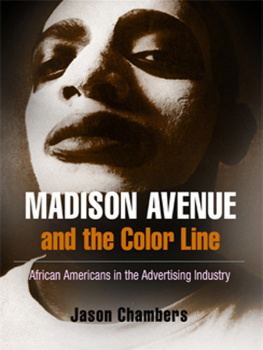
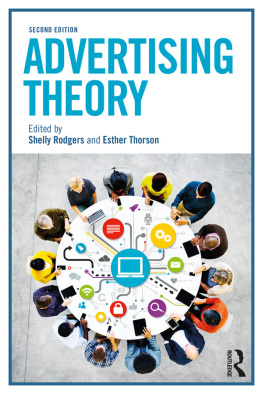

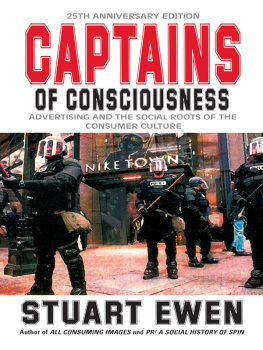
 The paper used in this publication meets the minimum requirements of American National Standard for Information SciencesPermanence of Paper for Printed Library Materials, ANSI/NISO Z39.48-1992.
The paper used in this publication meets the minimum requirements of American National Standard for Information SciencesPermanence of Paper for Printed Library Materials, ANSI/NISO Z39.48-1992.